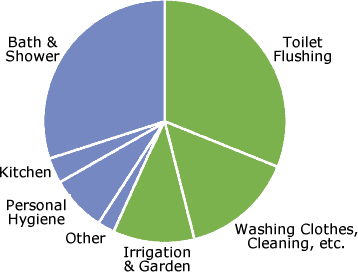Residential Water Treatment
Hard Water
Hard water is the most common problem found in the average home. Hard water is typically defined as water having more than 1 GPG (grains per gallon) of dissolved minerals in it, generally consisting of calcium, magnesium carbonate, and/or manganese. The amount of hardness in water is usually measured in GPG (grains per gallon).
 We treat hard water with an Ion Exchange Water Softener. The softener operates using an “ion exchange” process. When hard water contacts the cation resin beads, by passing through the softener mineral tank which have soft sodium/potassium ions attached to them, an ion exchange process takes place with the hard mineral ions, (normally calcium and/or magnesium), and during this contact, simply trade places with the soft sodium/potassium ions.
We treat hard water with an Ion Exchange Water Softener. The softener operates using an “ion exchange” process. When hard water contacts the cation resin beads, by passing through the softener mineral tank which have soft sodium/potassium ions attached to them, an ion exchange process takes place with the hard mineral ions, (normally calcium and/or magnesium), and during this contact, simply trade places with the soft sodium/potassium ions.
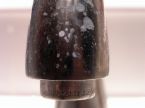 You can reduce your laundry detergent, dishwashing soap, hand soap and shampoo to half what you would normally use, not to mention soft water is much more pleasant to wash with, leaving less soap scum on you, and your Users of soft water have reported a savings of up to 70%!
You can reduce your laundry detergent, dishwashing soap, hand soap and shampoo to half what you would normally use, not to mention soft water is much more pleasant to wash with, leaving less soap scum on you, and your Users of soft water have reported a savings of up to 70%!
Iron Removal
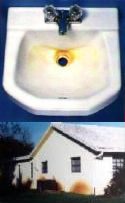
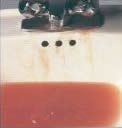 An iron problem is characterized by the red-brown staining of bathroom fixtures and laundry. In well water, iron usually occurs in its ferrous state. The water is clear when drawn but once exposed to air the iron changes into a ferric (oxidized) state. The water turns red and forms insoluble “rust” particles.
An iron problem is characterized by the red-brown staining of bathroom fixtures and laundry. In well water, iron usually occurs in its ferrous state. The water is clear when drawn but once exposed to air the iron changes into a ferric (oxidized) state. The water turns red and forms insoluble “rust” particles.
Staining can be caused by as little as 0.3 milligrams per liter (mg/L). When staining becomes visible you need to consider an Iron Removal System.
Our iron removal system is made with a back washable media filtration system using a specific iron removal media.
Hydrogen Sulfide Gas (Rotten Egg Odor/Sulfur Water

 Hydrogen sulfide gas (H2S) can occur naturally in any water well, and gives the water a characteristic “rotten egg” taste or odor. We remove hydrogen sulfide gas with a two-phase process. First we install a chlorine injection system which will eliminate the sulfur bacteria and oxidize the sulfur into a filterable state.
Hydrogen sulfide gas (H2S) can occur naturally in any water well, and gives the water a characteristic “rotten egg” taste or odor. We remove hydrogen sulfide gas with a two-phase process. First we install a chlorine injection system which will eliminate the sulfur bacteria and oxidize the sulfur into a filterable state.
Secondly we filter that water through a back washable system to remove the H2S. Our H2S removal systems are 100% guaranteed to remove your H2S problems.
Bacteria Control
Disinfection for the purpose of this discussion is to control bacteria, viruses in potable water for residential systems.
Coliform Bacteria
Coliform Bacteria are the bacteria most commonly associated with water quality. The Environmental Protection Agency standard for acceptable drinking water is a total coliform count of zero. Coliform bacteria are a large group of various species of bacteria. The group includes bacteria that occur naturally in the intestines of warm-blooded animals (fecal coliform) and non-fecal coliform bacteria. Fecal coliforms can include disease causing and non-disease causing species.
Iron Bacteria
Iron Bacteria Some bacteria that occur in wells, while not themselves harmful, can cause problems. Iron bacteria can cause staining of plumbing fittings and laundry, can provide a place in wells for other bacteria to live, can increase corrosion and can cause encrustation of pipes. Iron and sulfur bacteria cause a build up of a bio- film in plumbing. By providing an environment for other more harmful bacteria to live, the slime reduces the ability of chlorine to kill bacteria. Another negative effect of iron bacteria is that they can cause electrons from ferrous iron (Fe2) to be converted to ferric iron (Fe3). This results in increased oxidation (corrosion) of pipes.
The control of the bacteria and viruses is done with either chlorine or Ultra Violet (U.V.) lights, and in some cases a back washable filter to remove the oxidized materials.
Acid Water
 Acidic water means your water has a pH balance of less than 7.0 and will actually eat away at your plumbing, as well as deteriorating copper pipe = blue and green staining and galvanized pipe causing red staining from iron leaching out of pipes.
Acidic water means your water has a pH balance of less than 7.0 and will actually eat away at your plumbing, as well as deteriorating copper pipe = blue and green staining and galvanized pipe causing red staining from iron leaching out of pipes.
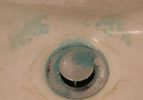 This problem is solved by using a pH neutralizing system, which will raise the pH level and turn your water from acidic to alkaline saving your homes expensive plumbing in the process. Our neutralizing system is made with a backwash control valve using two neutralizing media’s. By using a back washable valve you will not only get the acid problem corrected but will also gain the advantage of a filtration system.
This problem is solved by using a pH neutralizing system, which will raise the pH level and turn your water from acidic to alkaline saving your homes expensive plumbing in the process. Our neutralizing system is made with a backwash control valve using two neutralizing media’s. By using a back washable valve you will not only get the acid problem corrected but will also gain the advantage of a filtration system.
Reverse Osmosis (Bottled Water Quality)
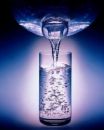 Reverse osmosis (RO) is a membrane separation process in which feed water flows along the membrane surface under pressure. Purified water permeates the membrane and is collected, while the concentrated water, containing dissolved and undissolved material that does not flow through the membrane, is discharged to the drain.
Reverse osmosis (RO) is a membrane separation process in which feed water flows along the membrane surface under pressure. Purified water permeates the membrane and is collected, while the concentrated water, containing dissolved and undissolved material that does not flow through the membrane, is discharged to the drain.
The key requirements of Reverse Osmosis (RO) process are a membrane and water under a pressure. Other requirements include pre filtration to remove suspended impurities and carbon to remove chlorine (damages the membrane).
Most membranes remove 95+% of the dissolved impurities depending on the impurity and the composition of water.
Reverse osmosis systems (RO Systems) remove salts, microorganisms and many high molecular weight organics. System capacity depends on the water temperature, total dissolved solids in feed water, operating pressure and the overall recovery of the system.
RO systems can be used as a point of use system(under the sink) or as a whole house system which provides for several points of use and a larger capacity.
Whole House Reverse Osmosis Systems
A typical Whole House Reverse Osmosis System includes the following main components:
- Reverse Osmosis Unit to produce the daily household requirements. For example, a 500 gallon-per-day system would produce purified water at the rate of about 20 gallons per hour. Since 20 gallons per hour is not enough to supply the demands of all normal household functions, a supplementary storage system is required so that ample water will be on hand when needed.
- Storage Tank. An atmospheric (non-pressurized) storage tank large enough to provide ample water for daily activities. The reverse osmosis unit refills the tank as water is taken from it. The water is stored at atmospheric pressure and must, therefore, be re-pressurized for use.
- Re-pressurization System. This system can consist simply of a pump that comes on automatically when water is needed and supplies pressurized water to the home. Ideally, however, it should include a smaller bladder or diaphragm tank that is filled to house pressure by a pump and gives a more even supply of water when the demand arises.
Rainwater Collection System
Conserve Water – Reduce Costs – Save Money
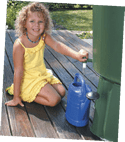 Rainwater collection/harvesting is the collection of rainwater from a roof that is filtered, stored and then supplied on demand for use in non-potable applications such as vehicle washing, irrigation, etc.
Rainwater collection/harvesting is the collection of rainwater from a roof that is filtered, stored and then supplied on demand for use in non-potable applications such as vehicle washing, irrigation, etc.
Only one percent of the water we use every day is used for personal consumption. The rest is used to clean, flush toilets, shower, water the lawn, irrigate gardens, wash cars, fill swimming pools, do laundry and complete other household chores. For this reason, rainwater harvesting is practical and offers significant ecological and economic advantages!
We estimate more than half of the water we use each day can be replaced with rainwater, without any inconvenience. This amount includes flushing toilets, washing clothes, cleaning, watering the garden and irrigation. This can potentially save 60,000 gallons of water on an annual basis for a family of four using 300 gallons of water per day!
Save 55% or more by harvesting rainwater!
